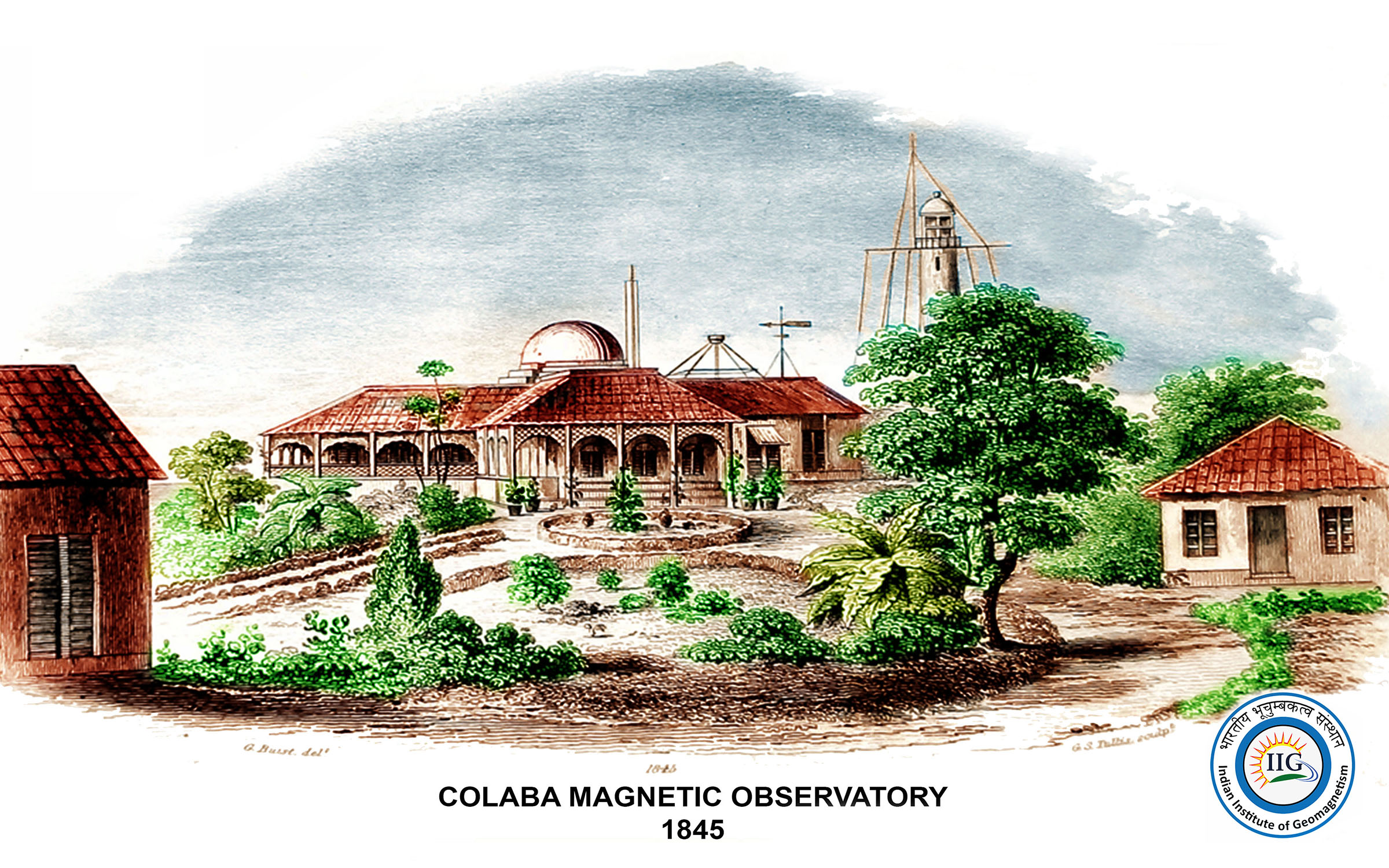
The Colaba Observatory, established in 1823 by the East India Company, holds the distinction of being one of the oldest geomagnetic observatories in the world. Located near the southern tip of Mumbai (then Bombay), the observatory was established to monitor variations in the Earth’s magnetic field and to conduct meteorological and astronomical observations. Over the decades, it became a cornerstone of geomagnetic research in India, contributing valuable long-term systematic geomagnetic measurements in India. Its data formed part of early international efforts to study geomagnetic storms and solar-terrestrial relationships. The legendary Colaba-Alibag magnetic data series, extending over 180 years, remains a globally recognized benchmark for geomagnetic research.
With the approval of the Governing Council (GC) of the Indian Institute of Geomagnetism (IIG), the historic Colaba Observatory has been renamed and reconstituted as the Colaba Geomagnetic Research Laboratory (CGRL) - now serving as the fourth Regional Laboratory under IIG. This transformation honors its scientific legacy while positioning it as a modern research and computational center for advancing studies in geomagnetism, space weather, and climate modeling. The restructured laboratory continues to preserve the observatory’s historical assets while integrating state-of-the-art computational and analytical infrastructure to support contemporary geoscientific research. The geographic co-ordinates of CGRL is 18.89°N and 72.81°E.
One of the most unique features of the CGRL is its Record Room, which houses meticulously preserved archival geomagnetic observations, including handwritten logs dating back to the 19th century. Dr. Nanabhoy Moos who became the first Indian Director of Colaba Magnetic Observatory in 1896, incorporated the magnetic data and different geomagnetic phenomena into a volume called the Moos Volume which is its prized possessions the Moos Volume, a compendium of early magnetic data and instrument records that serve as an invaluable reference for both historians and scientists studying the evolution of geomagnetic field measurements in India.
Visitors and researchers can also explore antique geomagnetic instruments once used for magnetic measurements. These historical instruments stand as testaments to the precision and dedication of early observers and underscore the observatory’s pivotal role in the global geomagnetic observation network.
The scientific activities of CGRL involves the following
A: Digitization and Preservation of Archived magnetograms:
To safeguard this priceless legacy and make it accessible to future generations, the CGRL has undertaken a comprehensive data digitization program. Historical magnetic records and observational logs are being systematically scanned, digitized, and archived into standardized digital formats. This effort not only ensures long-term preservation but also facilitates easy access and analysis for researchers engaged in studying long-term geomagnetic and climatic variability.
B: Geomagnetic field dynamics, secular variation and space weather events in History
The past geomagnetic records are being looked into in order to look for long term changes in the geomagnetic field signatures and episodes of space weather events from historical records.
C: Coupled magnetosphere-ionosphere-atmosphere interactions
The center also focuses on the investigation of dynamic processes coupling the magnetosphere-ionosphere-atmosphere systems using observational, theoretical and simulation studies using data from ground, and satellite measurements
Facilities available at CGRL:
CGRL is now equipped with a High-Performance Computing (HPC) system comprising six compute nodes. This advanced computational setup enables large-scale numerical simulations and modeling related to geomagnetic field dynamics, Coupled magnetopsehre-ionopshere-atmopshere modelling,
Dr. Jayashree Bulusu (Head)
Dr. Abhishek Kumar (Administrative - In - Charge)
Mr. Shivam R. Dobariya ( Stand by Administrative - In - Charge)
Colaba Geomagnetic Research Laboratory (CGRL)
Moos Tamba Bangla, Nanabhai Moos Marg,
Near R.C.Church, Colaba, Mumbai,
Maharashtra 400005
Tel. No. 022-22151609
Email Id: iig[dot]colaba[at]iigm[dot]res[dot]in